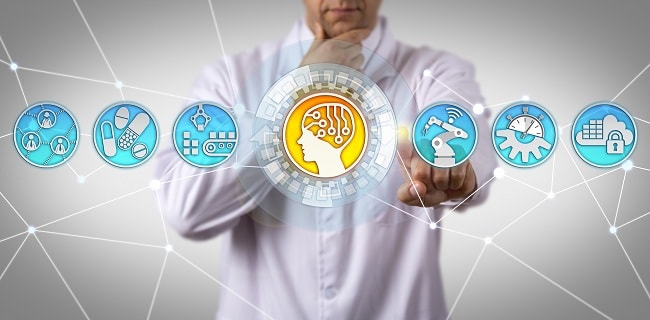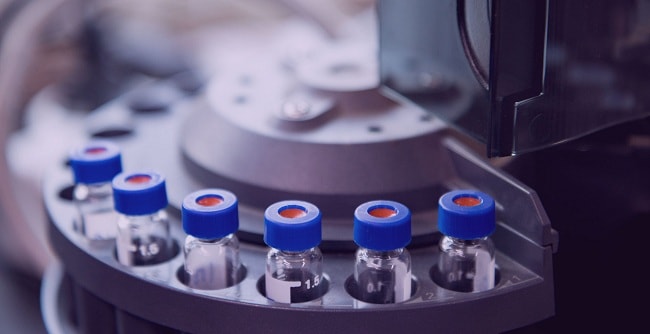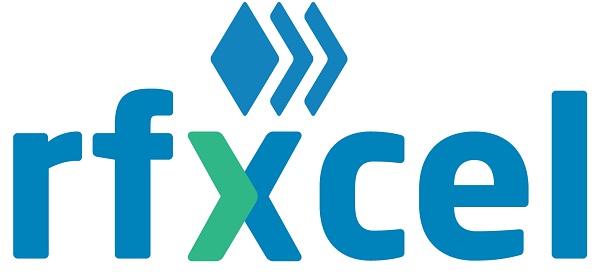As the global logistics and supply chain industry continues to grow — it is expected to reach $15.5 trillion by 2023 — pharmaceutical companies are facing more hurdles than ever to monitor their cargo as it passes through the supply chain.
Critical priorities include maintaining precise environmental conditions, monitoring for damage or delays, and preventing counterfeit and theft. It should come as no surprise that managing these challenges on such a massive scale requires the latest technology.
Fortunately, the Internet of Things (IoT) has the power to alleviate a lot of these supply chain issues. And the market isn’t going to slow down any time soon: Global pharma track and trace solutions are expected to reach a value of $2.38 billion by the end of 2023.
Essentially, IoT enables data to be sent in real time from connected products over a virtual network, streamlining logistics and keeping operations moving efficiently. These solutions allow companies to prevent damage and delays all along the supply chain, and combat theft and counterfeit products.
Let’s take a deeper look into why it’s in the interest of every modern pharma company to get on board with IoT technology if they want to ensure continuity, visibility, and productivity in their supply chain, and, by extension, patient safety.
Continuity
Many pharmaceutical products must reach their destination within a specific time frame to assure their integrity. Transitioning from different routes and modes of transportation can cause delays, especially if the owner of the assets lacks real-time updates of the cargo’s location and must instead rely on shipping reports from other parties or obsolete tracking solutions. The owner is forced to entrust their products to a variety of couriers, with no real way to verify the status of the shipment until it arrives at its final destination.

The implementation of IoT technology provides pharma companies with insights at each stage of the supply chain, enabling them to make real-time, data-driven decisions about routes, carriers, and other vital considerations. This allows, for example, the “smartening” of warehouses and optimization of routes.
Furthermore, IoT technology allows companies to pull predictive and prescriptive data from all parts of the supply chain, conduct innovative analytics, cut costs, ensure meeting compliance requirements, assure patient safety, and ultimately better serve their customers. Companies will enjoy greater continuity with their products arriving consistently on time and intact, resulting in satisfied buyers and an improved reputation for the sellers.
Visibility
Unit-level visibility is more essential than ever. Temperature, light, tilt, shock, and other transport variables can damage cargo. For example, light detection inside containers is an indication of product tampering or alteration, products such as insulin need to be kept at a certain temperature and out of direct sunlight, and certain cold chain shipping containers require batteries that will be compromised if they’re not kept level. In fact, nearly all 2017 FDA drug approvals were cold chain products, which require careful temperature management throughout the entire supply chain process. Many of these are treatments for new diseases, making it even more important that they are well cared for.

Not all current monitoring sensors and data loggers can track the quality of individual items in real time, meaning many pharma companies aren’t able to truly safeguard their products during shipment. In the event of a problem that cannot be addressed while the cargo is en route, such as temperature fluctuations or light exposure, the whole order must be destroyed.
However, IoT live monitoring gives companies valuable and abundant traceable inputs, such as the temperature, tilt, shock/vibration, humidity, speed, pressure, and motion of the vehicles and the containers they’re carrying as they flow through the supply chain. This means, for example, if there is a temperature excursion or inadvertent light exposure on pallets equipped with item-level sensors, companies can track those individual products that have been affected. This type of monitoring drives greater efficiency, profitability, and return on investment.
Companies utilizing IoT technology get real-time updates on the status of their cargo, including location and environmental conditions, from anywhere in the world. Accessing these updates from the comfort of a smart device, a lead technician can diagnose a problem and send the requisite information to proactively fix it, regardless of how far they might be from the shipment.
Productivity
Theft of cargo remains a major criminal undertaking and, with millions of dollars’ worth of pharmaceutical supplies being stolen each year, it’s delivering a major blow to productivity and revenues. Not only does it disrupt the supply chain, it causes huge financial losses and can affect team morale. So, with the increase in valuation of many drugs in recent years comes a fresh need for companies to ensure their cargo arrives safe, intact, and secure.
IoT technology allows companies to exercise vigilance over their assets, with enabled sensors sending advanced data in real time. Couple this with unit-level tracking, and companies can see the exact location and status of their units as they are being transported. Live GPS tracks location and can verify if drivers are doing unauthorized pickups, raising flags for potential theft activity and identifying trends on carriers and routes. If anything, unusual happens, the owner of the asset is notified and can respond in a timely manner. With the implementation of IoT technology and the resulting drop in cargo theft, pharma companies enjoy greatly increased productivity.
The often-vast distances between “Point A” and “Point B” present challenges to effectively managing cargo. For industries as large and complex as pharmaceuticals — where time, care, and security could cost millions of dollars — efficiency is key. Advanced solutions made possible by IoT technologies allow companies to keep a closer eye than ever on their products, protecting quality, creating long-lasting customer relationships, and ultimately boosting their return on investment.




















